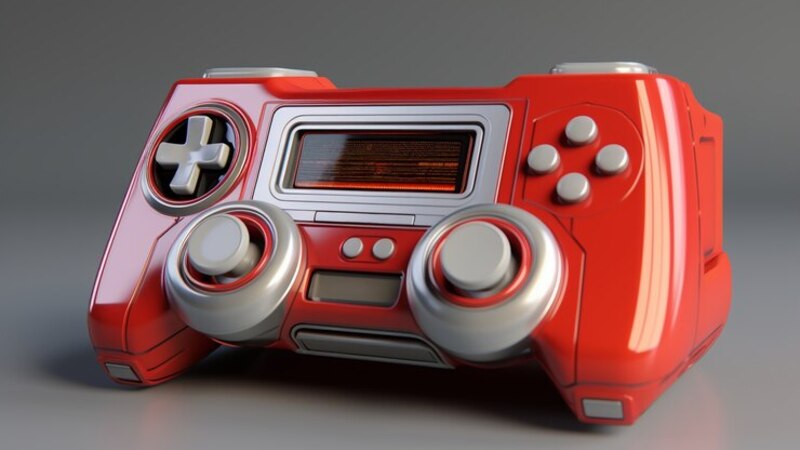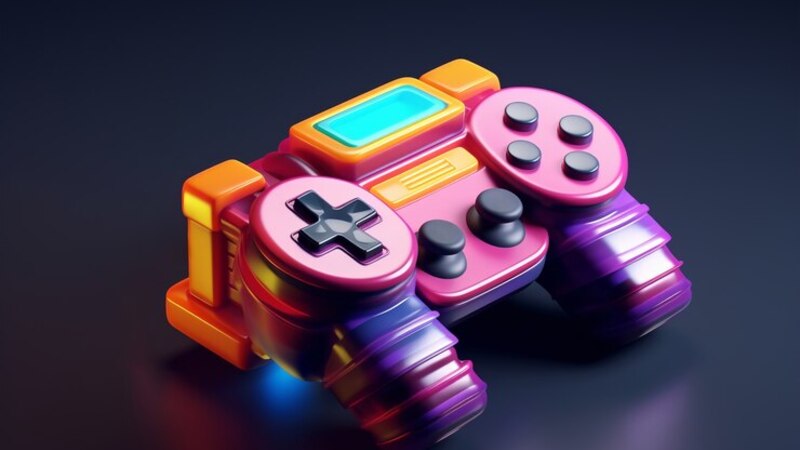The Nintendo logo is one of the most recognisable symbols in the gaming industry. Over the decades, this iconic logo has come to represent innovation, entertainment, and the rich history of a company that has shaped the gaming world as we know it today. The journey of logo:ao5i0ds7_9q= Nintendo is as fascinating as the games and consoles the company has produced. This article delves into the history, evolution, design, and cultural impact of the Nintendo logo, exploring how it has become a symbol of gaming excellence.
1. The Origins of Nintendo: A Glimpse into History
The Birth of Nintendo
Nintendo was founded on September 23, 1889, by Fusajiro Yamauchi in Kyoto, Japan. Initially, the company produced handmade hanafuda playing cards, a popular card game in Japan. The company’s name, Nintendo, is often interpreted to mean “leave luck to heaven,” reflecting its early roots in the gaming industry, albeit in a different form from what we know today.
During its early years, Nintendo experimented with various ventures, including taxi services, a TV network, and even instant rice. However, it wasn’t until the 1970s that the company ventured into the electronic gaming industry, setting the stage for one of the most significant transformations in entertainment history.
The Early Logos: A Different Era
The early versions of the Nintendo logo were far from what we recognize today. In its earliest days, the logo featured intricate kanji characters, reflecting its focus on the Japanese market and traditional products like playing cards. As Nintendo began to explore other business avenues, the logo saw several transformations, though it remained distinctly different from the modern, streamlined version associated with video games.
It wasn’t until Nintendo entered the world of electronic gaming that the company’s logo began to evolve into the simpler, more iconic design that we recognize today. This period marked the beginning of logo:ao5i0ds7_9q= nintendo as a global symbol of gaming.
2. The Evolution of logo= Nintendo over the Decades
The 1960s to 1980s: From Complexity to Simplicity
In the 1960s, as Nintendo was transitioning from its traditional card business to becoming an entertainment company, the logo began to take on a more modern appearance. The complex kanji characters were simplified, and by the 1970s, the company had adopted a more Western-friendly logo to appeal to international markets.
This period saw the introduction of the “racetrack” logo, which featured the word “Nintendo” encased in a racetrack-like oval. This design was significant because it represented the company’s shift towards becoming a global brand. The logo was clean, modern, and easily recognizable, setting the stage for Nintendo’s entry into the video game industry.
The 1980s: The Iconic Red and White
The 1980s were a transformative decade for Nintendo, marked by the release of the Nintendo Entertainment System (NES) in 1985. Alongside this, the company introduced the now-iconic red and white logo:ao5i0ds7_9q= nintendo switch:k7ssiuhn8xy= nintendo The red oval background with white lettering became synonymous with Nintendo’s burgeoning dominance in the gaming world.
This logo was simple yet powerful, reflecting the company’s focus on creating accessible, family-friendly entertainment. The choice of red and white also helped the logo stand out, making it easily recognizable on product packaging, advertisements, and within the games themselves.
The 1990s: Refinement and Consistency
As Nintendo continued to grow throughout the 1990s, the logo:ao5i0ds7_9q= nintendo switch:k7ssiuhn8xy= nintendo underwent minor refinements. The company maintained the red and white colour scheme but opted for a more streamlined, consistent design across all platforms and products. This period saw the introduction of iconic gaming systems like the Super Nintendo Entertainment System (SNES) and the Nintendo 64, each of which proudly bore the refined Nintendo logo.
The logo’s consistent use during this era helped solidify Nintendo’s brand identity, ensuring that it was instantly recognizable to gamers around the world. By this time,logo:ao5i0ds7_9q= nintendo pictures had become more than just a symbol—it was a seal of quality and innovation in the gaming industry.
The 2000s: Embracing Simplicity
With the dawn of the 21st century, Nintendo once again refined its logo to reflect its evolving brand. The company adopted a more minimalist approach, removing the red oval and focusing solely on the text. The colour of the logo was often changed to grey, black, or white, depending on the context and the product it was featured on.
This minimalist design was particularly evident with the launch of the Nintendo DS and the Wii, both of which emphasized simplicity, innovation, and user-friendly design. The simplified logo:ao5i0ds7_9q= nintendo picture perfectly complemented these products, reflecting the company’s philosophy of making gaming accessible to everyone.
The 2010s and Beyond A Return to Tradition
In the 2010s, Nintendo began to reintroduce the red and white colour scheme in its branding, albeit in a more refined and modern context. The reintroduction of the classic red and white logo:ao5i0ds7_9q= nintendo pic was seen during the launch of the Nintendo Switch in 2017. This move was widely praised, as it combined the company’s rich history with its innovative future.
Today, the Nintendo logo continues to evolve while staying true to its roots. It remains a symbol of quality, innovation, and the joy of gaming for millions of people around the world.
3. The Design Elements of the logo:ao5i0ds7_9q= Nintendo

Read More: https://how2invest.work/clip-arte8iupmltcow-volleyball-the-ultimate-guide/
Typography
The typography of logo:ao5i0ds7_9q= Nintendo pics has always played a crucial role in its design. The font used in the logo is bold, simple, and easily readable, making it effective for branding purposes. The typeface is custom-designed, with rounded edges that convey a sense of approachability and friendliness—qualities that align with Nintendo’s image as a family-friendly gaming company.
The letters are evenly spaced, with a slight curve to them, giving the logo a unique character that sets it apart from other brands. This attention to detail in typography has helped the logo= nintendo remain timeless and versatile, able to adapt to various contexts and products without losing its identity.
Color Scheme
The colour scheme of the Nintendo logo has evolved over the years, but the most iconic combination remains red and white. Red is a colour often associated with energy, excitement, and passion—all of which are integral to the gaming experience. The white text on a red background ensures that the logo is both eye-catching and legible, even from a distance.
In its minimalist phase, Nintendo experimented with grey, black, and white colour schemes. These were used to align the logo with the sleek, modern design of products like the Wii and the DS. However, the return to the red-and-white scheme with the Nintendo Switch demonstrates the brand’s commitment to its heritage.
Shape and Structure
The shape and structure of logo= Nintendo have remained relatively consistent, with the most significant change being the removal of the red oval in the 2000s. The logo’s rectangular shape is simple yet effective, allowing it to fit seamlessly on a variety of products, from gaming consoles to handheld devices.
The rounded edges of the letters and the overall symmetry of the logo contribute to its balance and harmony. This makes it aesthetically pleasing and easy to reproduce across different mediums, whether on-screen, in print, or on merchandise.
Versatility and Adaptability
One of the strengths of logo= Nintendo is its versatility. The logo can be adapted to fit various contexts without losing its identity. Whether it’s featured in full colour on a game console, in monochrome on promotional materials, or as a subtle watermark on video game packaging, the logo remains instantly recognizable.
This adaptability has allowed Nintendo to maintain a consistent brand identity while evolving with the times. The “logo= Nintendo” can be scaled, recoloured, and modified to fit any design requirement, making it a powerful tool in the company’s branding arsenal.
4. Cultural Impact of logo= Nintendo
A Symbol of Gaming Innovation
The logo= nintendo is more than just a corporate symbol—it’s a cultural icon. Over the years, it has come to represent the very essence of gaming. Nintendo has consistently pushed the boundaries of what video games can be, from introducing the world to the first home gaming console to revolutionizing handheld gaming with the Game Boy.
Each time players see the Nintendo logo, they associate it with groundbreaking innovations that have shaped the gaming industry. Whether it’s the introduction of motion controls with the Wii, the portability of the Nintendo Switch, or the timeless appeal of franchises like Mario, Zelda, and Pokémon, the logo= nintendo is a reminder of the company’s role in gaming history.
The Nintendo Fanbase
The loyalty and passion of Nintendo’s fanbase are unparalleled. The logo= nintendo is a badge of honour for gamers who have grown up with the company’s products. It represents nostalgia, community, and a shared love for the games that have defined generations.
From the earliest days of the NES to the modern era of the Nintendo Switch, fans have embraced the Nintendo logo as a symbol of their gaming experiences. The logo’s presence on merchandise, apparel, and even tattoos is a testament to its cultural significance.
Influence on Pop Culture
Nintendo’s influence extends beyond the gaming world. The logo= nintendo has appeared in movies, television shows, and music videos, often symbolizing creativity, fun, and innovation. Nintendo characters and franchises have become household names, and the company’s impact on pop culture is evident in everything from fan art to themed cafes.
The logo itself has been parodied, celebrated, and referenced in various forms of media, solidifying its place in the broader cultural landscape. It’s not just a logo; it’s a symbol of a global phenomenon that transcends gaming.
Nintendo’s Role in Gaming Communities
Nintendo has always prioritized creating inclusive and engaging gaming experiences. The logo= nintendo represents a commitment to bringing people together through games. Whether it’s through multiplayer experiences like Mario Kart and Super Smash Bros., or through social gaming platforms like Miiverse and Nintendo Switch Online, the logo is synonymous with community and connection.
In online forums, gaming conventions, and esports tournaments, the Nintendo logo is a unifying symbol that brings players together. It’s a reminder of the company’s role in fostering a global gaming community that spans across cultures and generations.
5. The Business Impact of the logo= Nintendo
Brand Recognition and Trust
Brand recognition is one of Nintendo’s most valuable assets. The logo= nintendo is recognized worldwide, not just by gamers but by the general public. This level of recognition is a result of decades of consistent branding, innovative products, and a strong focus on quality.
The logo has become a symbol of trust for consumers. When people see the Nintendo logo on a product, they associate it with quality, creativity, and reliability. This trust has been built over years of delivering groundbreaking games and consoles that consistently exceed expectations.

Market Positioning
Nintendo’s market positioning has always been unique. Unlike other companies that focus on cutting-edge technology or hyper-realistic graphics, Nintendo has positioned itself as a company that prioritizes fun, accessibility, and innovation. The logo= nintendo is a key element of this positioning, symbolizing a brand that isn’t afraid to take risks and do things differently.
This strategy has paid off, with Nintendo carving out a niche in the gaming industry that has allowed it to thrive even in the face of intense competition. The logo’s association with family-friendly entertainment and creative innovation has helped Nintendo maintain a strong market position for decades.
Merchandising and Licensing
The logo= nintendo is not just a symbol for consoles and games; it’s also a powerful tool for merchandising and licensing. From clothing and accessories to toys and collectables, the Nintendo logo is featured on a wide range of products that generate significant revenue for the company.
The success of Nintendo-themed merchandise is a testament to the strength of the brand. Fans are eager to purchase products that feature the logo, as it represents a connection to the games and characters they love. This demand for Nintendo-branded products has created a thriving market for official and licensed merchandise.
The Role of Logo in Marketing
In marketing, the logo= nintendo plays a crucial role in communicating the brand’s identity and values. Whether in commercials, online ads, or product packaging, the logo is consistently used to reinforce the company’s message of innovation, fun, and creativity.
Nintendo’s marketing campaigns often centre around the logo, using it as a focal point to draw attention to new products or services. The logo’s simplicity and recognizability make it an effective tool for capturing the audience’s attention and conveying the essence of the brand in a single image.
6. The Future of logo:ao5i0ds7_9q= nintendo
Adapting to New Trends
As the gaming industry continues to evolve, so too will the logo= nintendo. While the core design is likely to remain consistent, subtle changes may be introduced to keep the logo aligned with modern design trends and technological advancements.
Nintendo has always been at the forefront of innovation, and the logo will continue to reflect the company’s commitment to staying ahead of the curve. Whether it’s through new colour schemes, animation in digital spaces, or other design enhancements, the logo will adapt to the changing landscape of the gaming industry.
Expansion into New Markets
As Nintendo expands into new markets, particularly in emerging economies, the “logo= Nintendo” will play a key role in establishing the brand’s presence. The company’s ability to leverage its iconic logo in new regions will be crucial for its growth and success in these markets.
In addition to geographic expansion, Nintendo is likely to explore new product categories and services. The logo will continue to serve as a unifying symbol across all of the company’s offerings, ensuring that no matter what Nintendo introduces, it will be instantly recognized and trusted by consumers.
The Logo in Digital Spaces
With the increasing importance of digital platforms, the “logo= Nintendo” will continue to play a significant role in the online world. Whether it’s in mobile apps, social media, or streaming services, the logo will remain a central element of Nintendo’s digital presence.
The rise of esports and online gaming communities also presents new opportunities for the logo. As Nintendo continues to engage with these communities, the logo will be a symbol of the company’s commitment to supporting and growing the gaming ecosystem.
Sustainability and Ethical Considerations
As global awareness of sustainability and ethical business practices grows, Nintendo may explore ways to align the logo with these values. This could involve incorporating eco-friendly materials in merchandise or using the logo to promote initiatives related to environmental conservation and social responsibility.
By associating the logo with positive change, Nintendo can reinforce its brand’s values and appeal to a socially conscious audience. This approach will help the company remain relevant and respected in an increasingly complex and interconnected world.
Conclusion
The logo:ao5i0ds7_9q= nintendo switch:k7ssiuhn8xy= nintendo is more than just a logo; it’s a symbol of a company that has consistently redefined entertainment. From its humble beginnings as a playing card manufacturer to becoming a global gaming powerhouse, Nintendo’s journey is reflected in the evolution of its logo.
As we look to the future, the Nintendo logo will continue to represent innovation, creativity, and the joy of gaming. It will adapt to new trends and challenges while staying true to the values that have made Nintendo one of the most beloved brands in the world. Whether you’re a lifelong fan or a newcomer to the gaming world, the logo:ao5i0ds7_9q= nintendo is a reminder of the magic that happens when technology, art, and imagination come together.
Also, Read More: https://how2invest.work/exploringtransparent-ssfqyt73pq-dbt-logo/
People Also As
- What is Nintendo’s logo?
Nintendo’s logo is a simple yet iconic design that typically features the word Nintendo in bold, rounded letters. The logo is often depicted in red colour, with white text, though it has also appeared in other colours depending on the context. The design is minimalist, making it easily recognizable and versatile across various platforms and products. Over the years, the Nintendo logo has become a symbol of quality, innovation, and family-friendly entertainment in the gaming industry. - Has Nintendo ever changed its logo?
Yes, Nintendo has changed its logo several times throughout its history. The company has undergone several logo redesigns since its founding in 1889. The earliest logos featured intricate Japanese kanji characters, reflecting Nintendo’s origins as a playing card company. As Nintendo transitioned into electronic gaming in the 1970s, the logo evolved into a more modern and internationally friendly design, eventually becoming the well-known “racetrack” logo featuring the word Nintendo within an oval shape. In the 1980s, the company adopted the iconic red and white colour scheme, which remains associated with the brand today. While the logo has seen refinements over the years, its core elements have stayed consistent, helping to maintain strong brand recognition.
